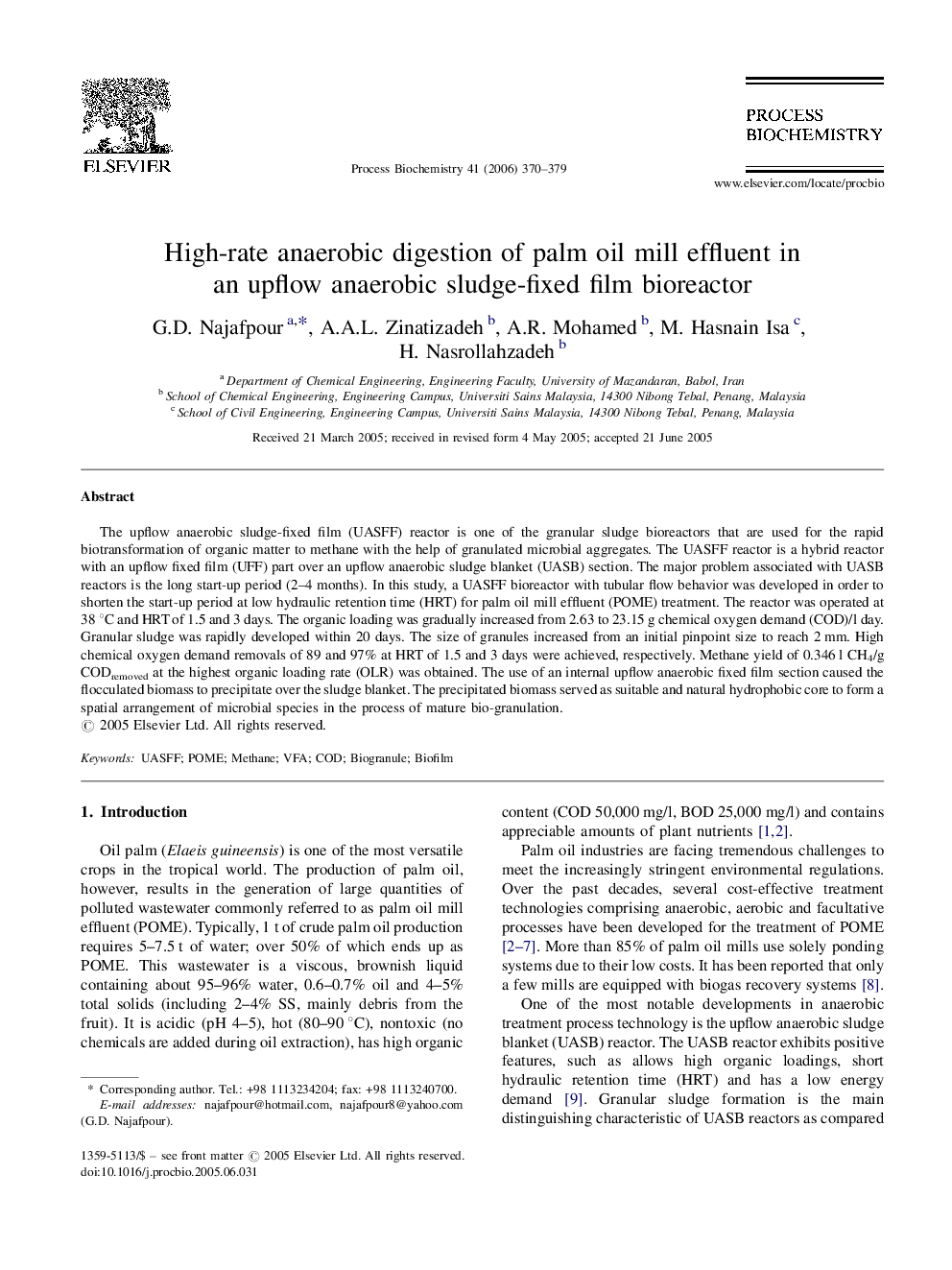| Article ID | Journal | Published Year | Pages | File Type |
|---|---|---|---|---|
| 36172 | Process Biochemistry | 2006 | 10 Pages |
The upflow anaerobic sludge-fixed film (UASFF) reactor is one of the granular sludge bioreactors that are used for the rapid biotransformation of organic matter to methane with the help of granulated microbial aggregates. The UASFF reactor is a hybrid reactor with an upflow fixed film (UFF) part over an upflow anaerobic sludge blanket (UASB) section. The major problem associated with UASB reactors is the long start-up period (2–4 months). In this study, a UASFF bioreactor with tubular flow behavior was developed in order to shorten the start-up period at low hydraulic retention time (HRT) for palm oil mill effluent (POME) treatment. The reactor was operated at 38 °C and HRT of 1.5 and 3 days. The organic loading was gradually increased from 2.63 to 23.15 g chemical oxygen demand (COD)/l day. Granular sludge was rapidly developed within 20 days. The size of granules increased from an initial pinpoint size to reach 2 mm. High chemical oxygen demand removals of 89 and 97% at HRT of 1.5 and 3 days were achieved, respectively. Methane yield of 0.346 l CH4/g CODremoved at the highest organic loading rate (OLR) was obtained. The use of an internal upflow anaerobic fixed film section caused the flocculated biomass to precipitate over the sludge blanket. The precipitated biomass served as suitable and natural hydrophobic core to form a spatial arrangement of microbial species in the process of mature bio-granulation.
